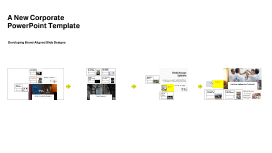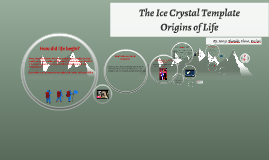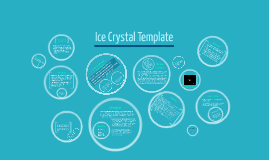Ice Crystal Template
Transcript: The theory was first proposed in 1972 when Stanley Miller put ammonia and cyanide in a vial. The compound changed from a colorless mixture into a amber-colored mixture. He found nucleotides and amino acids (Fox, 2008, p. 1). Researchers proposed that continually freezing and thawing the molecules could speed up the chemical reactions necessary for life (World Science, 2005, para. 16). The temperature of the ice plays a part in the RNA formation process (Trinks, Schroder, & Biebricher, 2005, p. 442). Researchers believe that on the primitive earth, “pockets of liquid could have expanded into a network of channels that mixed their contents during freeze-thaw cycles” (Fox, 2008, para. 37) Some of the strengths of the ice crystal templates are the multiple experiments that have been successful in proving they exist, as well as the multiple tests that have been conducted to prove that there is a possibility that this theory exists. It is a reasonable explanation to why the crystals form. DNA as well as other forms of nucleic acid exists in most beings and it will remain in them until the point where they no longer exist. TNA molecules can connect to other molecules easily and can change easily, also helping to prove the theory. RNA can as well, showing that it is diverse. “TNA activity. TNA can interact with a few of the same proteins that interact with DNA. Using molecular evolution technology, where possible functional segments of TNA are selected from a random set of synthesized” (Evolution News, 2012, p.1) . This theory is widely based off of DNA and other forms of protein synthesizers. Protein synthesizers are a widely studied subject. Being a widely studied subject, it makes it easier to make a connection between that and ice crystal templates. RNA molecules can be cut and spliced and used in experiments with ice to help prove the theory that the first life could have been frozen in ice. The ice crystal growth rate fluctuation between can vary between stages, making it difficult to control. “The growth of ice crystals is similar to the operation of life processes, but does not support the origin of life as described by the theory of evolution. Even the growth of an ice crystal demands a Creator” (Vardiman, L. 1990, p.8). The evidence is very subjective, there is still no significant evidence to prove that it is a theory. RNA plays a vital role in the expression of genes within the formation of life (Mandal, 2013). However, RNA does not synthesize in warm temperature (Mukai, Onodera & Yamada, 2010, p. 50). “Several basic questions remain unanswered, such as whether the reaction takes place entirely in the liquid phase or involves contributions from the ice–liquid interface, and whether concentration plays a role [the efficiency of the HPR ligation reaction argues that it does not] (Vlassov, Johnston, Landweber, Kazakov, 2004, p.14). Citations: Question: When was the theory first proposed? A Very Serendipitous Finding Question: In an experiment by Vlassov et al., researchers froze a hairpin RNA molecule, the molecules reversed and chained together end to end (Fox, 2008, para.32) Ice Crystal Template Weaknesses Continued In this experiment, what was the longest chain of RNA that was observed? Question: Instant Ice Crystals In Stanley Millers 25 yearlong experiment, what two chemicals did he keep frozen and observe? \ Strengths The ice crystal growth rate fluctuation between can vary between stages, making it difficult to control. -“The growth of ice crystals is similar to the operation of life processes, but does not support the origin of life as described by the theory of evolution. Even the growth of an ice crystal demands a Creator” (Vardiman, L. 1990, p.8). Ligation is .... a) When RNA molecules snip each other into pieces b) When life is formed in ice crystals c) When the ends of RNA molecules join together, replicate and bind to make longer chains of RNA d) The process of taking legal action RNA is self-replicating. DNA is a “chemical cousin” of RNA, which displayed that it could in fact be the basis of life (World Science, 2005, para. 5). When RNA is cooled below freezing, the chains of RNA join ends into a circle, “like a snake biting its tail” (Fox, 2008, para.32 Evidence through Experiments Question: Attwater, J., Wochner, A., Pinheiro, V. B., Coulson, A., & Holliger, P. (2010). Ice as a protocellular medium for RNA replication Nature Communications, 1 (6), 1-8 DOI: 10.1038/ncomms1076 BBC. Instant ice crystals- The secret life of ice. [Videofile]. (2011, October). Retrieved Biochemistry: Icy origins for RNA copying. (2013). Nature, 502(7472), 412. doi:10.1038/502412d Fox, D. (2008, February 1). Did Life Evolve in Ice? Discover. Retrieved November 1, 2013, from http://discovermagazine.com/2008/feb/did-life-evolve-in-ice#.UnReNyQVzVo In the Beginning, Before There Was RNA, There Was TNA. (2012) Evolution News. 6, November 2013. Retrieved from:

















